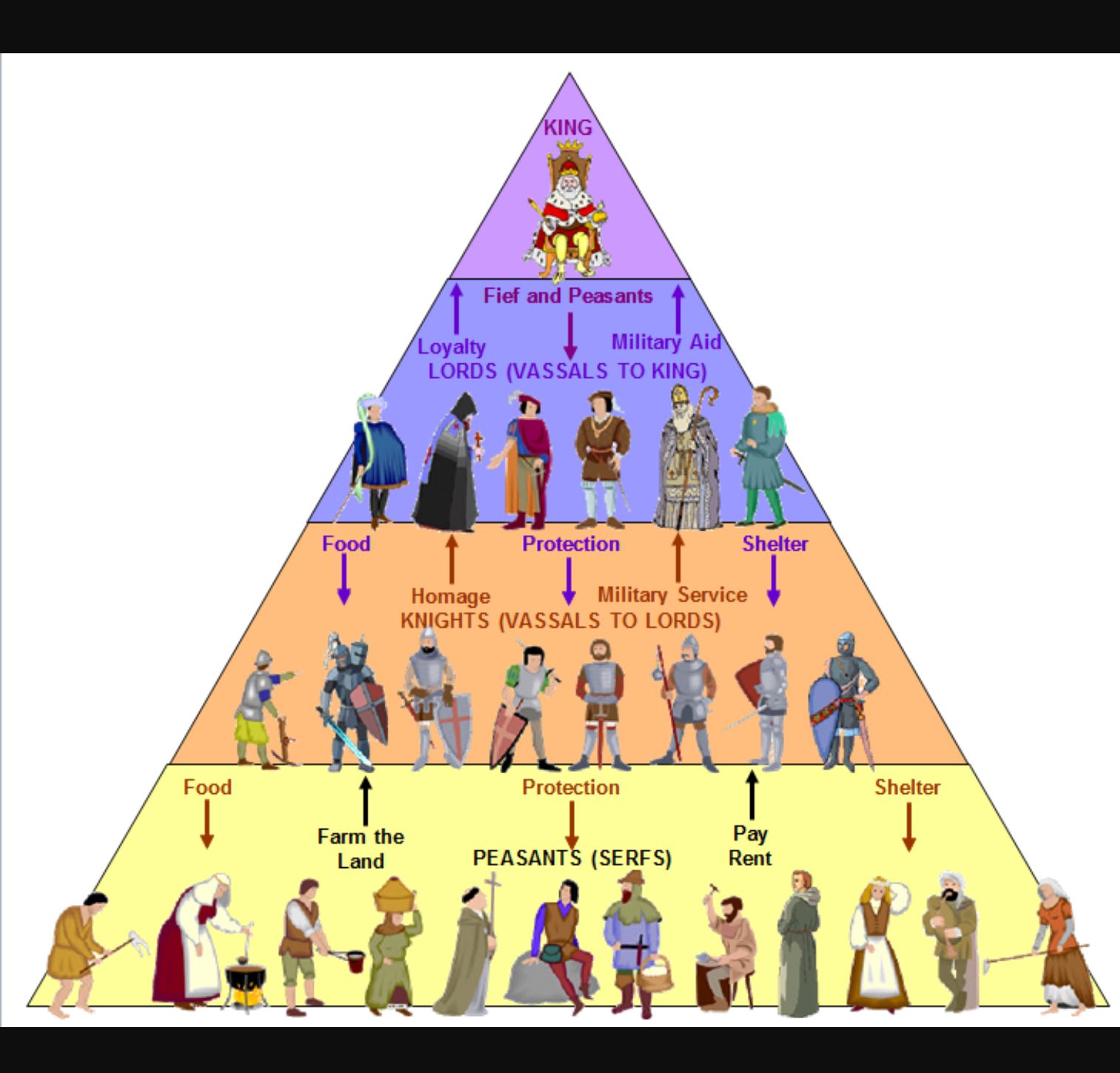
For 500 years, the empire provided stability and peace across a vast territory spanning three continents. The rise of Augustus as the first Roman emperor had marked the beginning of the Roman Empire in 27 B.C. The feudal system emerged out of a time of chaos in Europe. Local, decentralized, informal decision–making among individuals in the absence of powerful authorities led to the evolution of feudalism. In fact, feudalism grew because empires fell and kings were not strong. But the contemporary, Hollywood–inspired image of a strong king uniting a close–knit Camelot is not an accurate picture of feudalism.
Feudalism chart unlabeled code#
Medieval Arthurian legends sprang from the feudal tradition and its code of chivalry, and as fruits of the system, do reflect on the values of feudalism itself. Modern individuals often equate feudalism with the image of King Arthur and his Knights of the Round Table. Though not in practice today, feudalism and the legends it inspired continue to fascinate many people. Its informal and varied methods required a balance between superiors and dependents, rights and responsibilities. Feudalism relied on personal and/or family honor as well as self–interest to work. In all cases, a parallel code of values and aesthetics-chivalry in the West, bushido in the East-complemented and reinforced the system. In both cases, feudalism grew out of practice and precedents. In some places it filled the void left by other political organizations in others, it represented the next stage in the evolution of government. This system, based on personal relationships, local administration, and defined hierarchies, touched several continents for more than 1,500 years. Major figures William the Conqueror Eleanor of Aquitaineįew political systems have shown the adaptiveness and longevity of feudalism. Who controls distribution of goods? Nobility Who controls production of goods? Nobility

What roles do the people have? Work for nobles' benefit

How is government put into power? Birth feudal contract


 0 kommentar(er)
0 kommentar(er)
